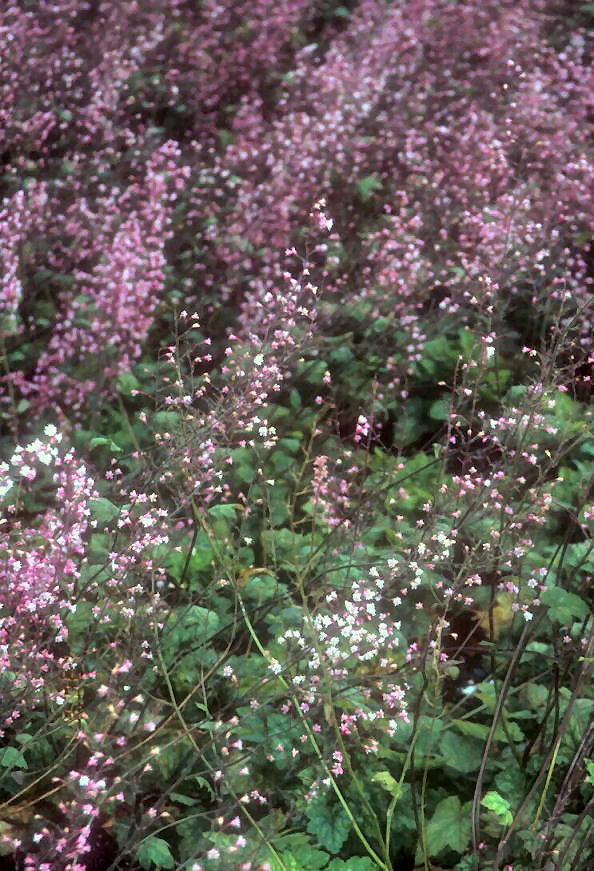| Botanical Name: Heuchera 'Bressingham Hybrids' | |
| Common Name: Bressinghan Coral Bells |

-
Anatomy
-
Culture
-
Design
Plant Type
Ground cover, Perennial
Height Range
Under 1', 1-3'
Flower Color
Pink, Red, White
Flower Season
Spring, Summer, Intermittent
Leaf Color
Green
Bark Color
n/a
Fruit Color
n/a
Fruit Season
n/a
Sun
Full, Half
Water
Medium
Growth Rate
Moderate
Soil Type
Clay, Loam
Soil Condition
Average, Rich, Well-drained, Dry
Soil pH
Neutral
Adverse Factors
n/a
Design Styles
English Cottage, Formal, Mediterranean, Ranch, Woodland
Accenting Features
Showy Flowers
Seasonal Interest
Spring, Summer, Fall
Location Uses
Entry, Perennial Border, Shrub Border, Foundation, Parking Strip, Patio, Walkways
Special Uses
Container, Cut Flowers, Small Spaces
Attracts Wildlife
Hummingbirds
Information by: Stephanie Duer
Photographer:
Photographer:
-
Description
-
Notes
'Bressingham Hybrids' are dainty bell-like flowers on erect stems, 18 to 24 inches tall, from June to July, with a color range of white, pink to rosy pink, and soft red. Plants form dense mounds of rounded, lobed leaves, with mounds generally under 15 inches in height, with a spread of 12 to 18 inches. Use in perennial borders, along paths, or at the edges of shrub or foundation borders. A lovely cut flower.
Grow in well drained soil in full sun to light shade (depending on the variety). When planted in full sun, they do best when not situated where it is very hot, such as against walls or by sidewalks. Ideally, plant in loamy soils, in dry shade to part shade conditions. Remove entire stalk after flowering to encourage continued bloom. In our cold winters, Heuchera crowns can heave above the soil line. Mulching after the ground freezes hard, will prevent the freezing and thawing that pushes the plants up. Check periodically to make sure the roots are not exposed. Replant, if possible. Some varieties are listed as evergreen; in our climate, it depends on the variety, the winter, and where they are planted. But even if not evergreen, the foliage carries well into the fall and early winter months. They do not do well in damp soils.